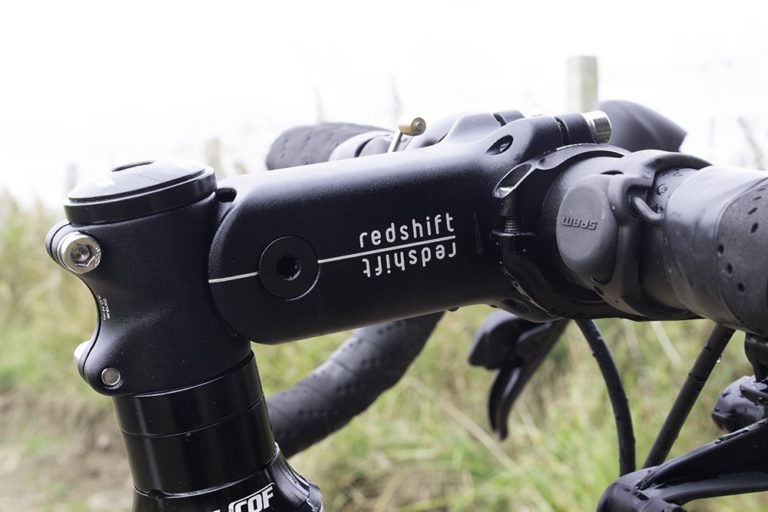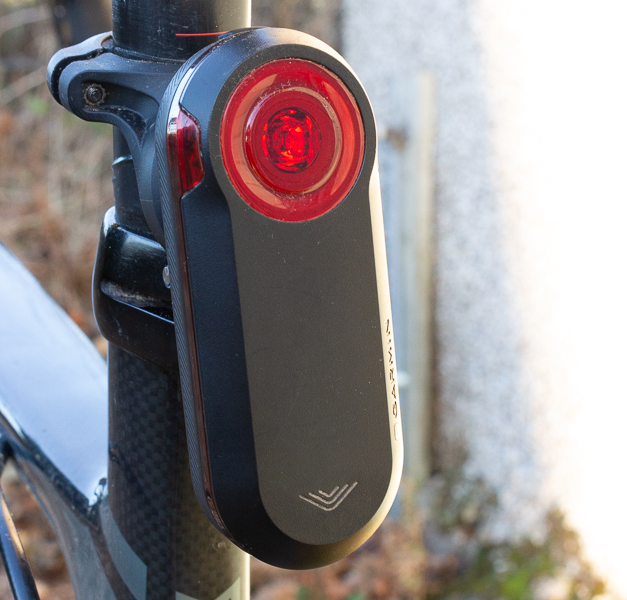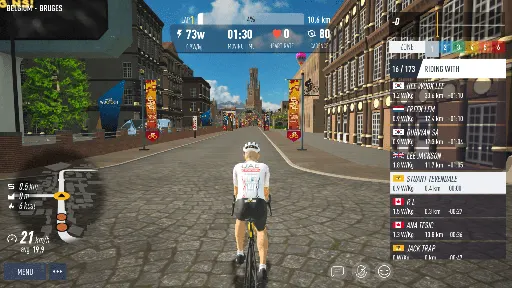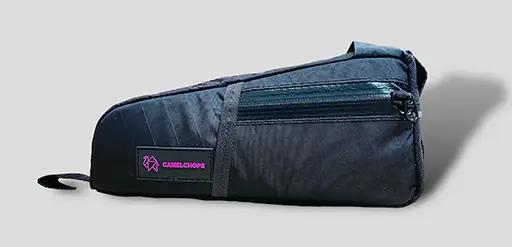Shimano Di2 Vs SRAM AXS Electronic Shifting
Electronic gear shifting, along with rim vs disc debate, is guaranteed to spark discussion amongst cyclists. Some love it, others can’t see the point of it over good old mechanical gears.
I’ve been using both Shimano Di2 since 2013 and SRAM AXS for about 18 months now and I love them both.
What’s wrong with mechanical?
Mechanical shifting’s been used since the introduction of the derailleur back in the 1930’s.
With a mechanical setup, the gear changers pull or release a mechanical cable that then moves the front and rear derailleurs. Initially, it was purely a friction system where the level pulled against ac spring to position the read mech. Later, the levers had defined ‘clicks’ for each gear, Indexed system.
Over time, the cables stretch, and the gear shift becomes less precise. Also, the front derailleur needs to be ‘trimmed’ to prevent the cage rubbing on the chain at the extremes of the rear cassette. This is a little more tricky with combined brake-shifters (‘brifters’).
How does Electronic Shifting Work?
In an electronic setup, the mechanical cable is replaced by an electrical cable (Shimano Di2) or a wireless connection (SRAM AXS). A switch on the handlebars sends a signal to the derailleur to move a precise amount, moving the chain onto another gear. The electronics in the derailleurs allow them to be trimmed automatically for optimum position.
Electronic shifting’s been around since the 1990’s but it didn’t really take off until Shimano introduced Dura-Ace Di2 in 2001. From there, the technology has trickled down to Shimano’s Ultegra groupset, and will probably trickly down to their 105 groupset soon. SRAM introduced electronic shifting alongside mechanical with their 11-speed RED and Force groupset, before going all-in on electronic-only with the 12-speed AXS groupsets. SRAM has recently introduced AXS Rival, a 105-equivalent level groupset.
Is Electronic shifting worth it?
Once it’s set up, electronic shifting gives you a consistent, perfect, shift each time. It’s just that little more accurate and precise over a mechanical setup. There are no cables to gradually stretch, so the system doesn’t become less precise over time, if it’s not properly maintained. The front mech also automatically trims itself, keeping chain noise & wear to a minimum.
One big advantage, and the main reason I initially went for a bike with Di2, is that you can have satellite gear shifters wired to the main shifters. In my case, I do the occasional triathlon, but I can’t justify a dedicated tri bike. I can pop on tribars for races and have the advantage of shifters at the end of the bars with minimal effort. All I have to do is simply fit the tri-bars and plug in two cables to the junction box under the stem.
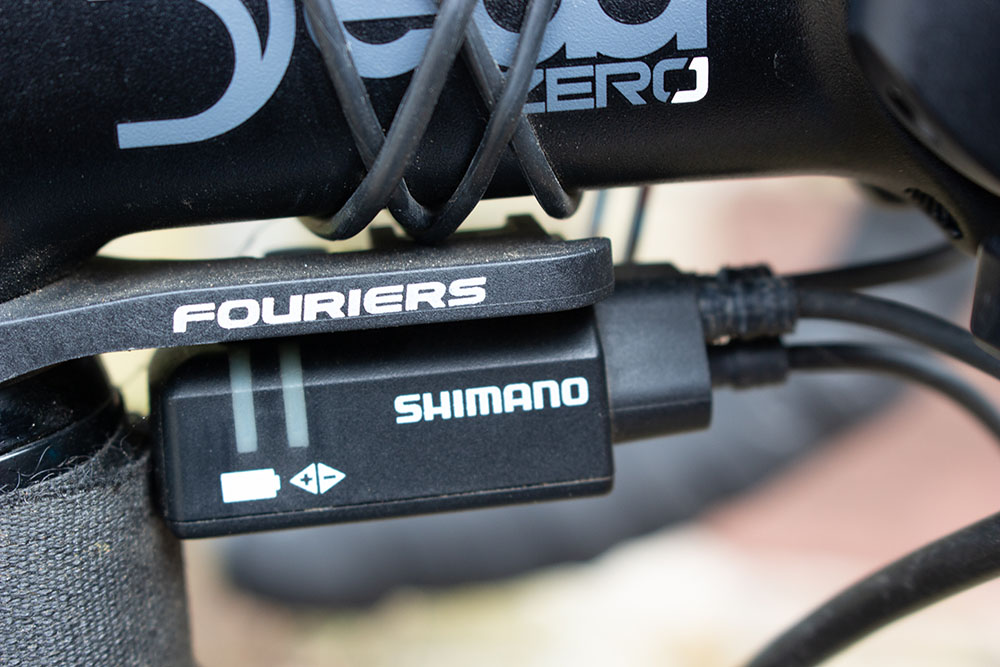
Di2 Junction Box 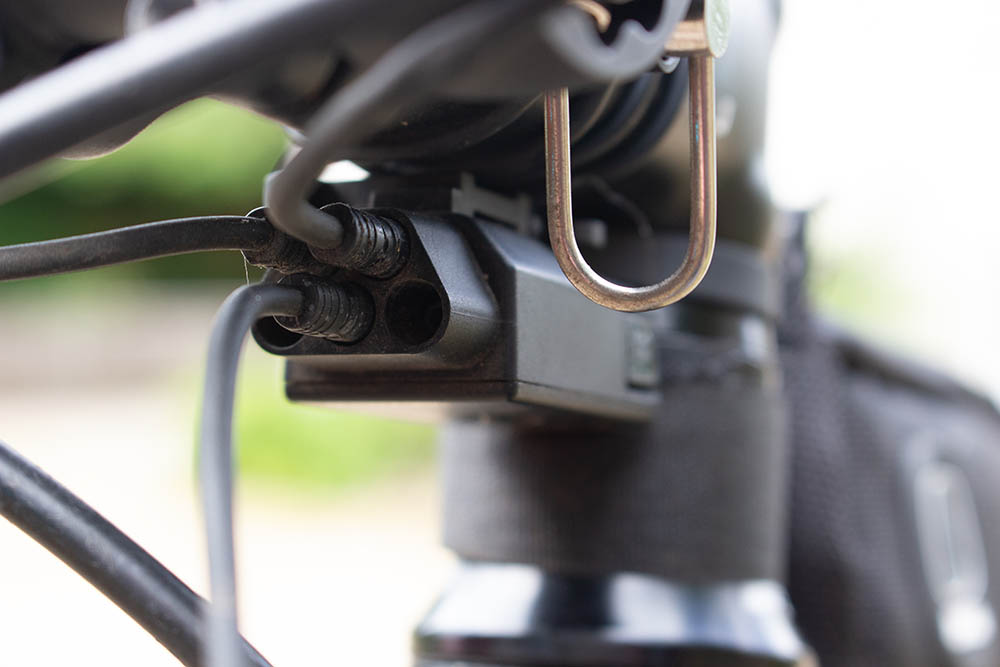
Di2 Junction Box
Of course, I could do this on a mechanical setup by swapping out cables, etc., but it would be nothing like as convenient.
What Happens When it Goes Wrong?
What happens when it fails? If you’ve got mechanical gears, and something fails, there’s a reasonable chance you’ll manage to fix it at the side of the road, or at least bodge something to get you home. Is this the case with electronic gears? The most common failure is the battery going flat – most often, this is due to the oversight of charging it. With Di2, the front mech will stop working first, leaving power for the rear derailleur. For SRAM AXS, each of the derailleurs has its own, identical, battery, which can be switched between the two units. For both systems, a charge lasts several thousand km.
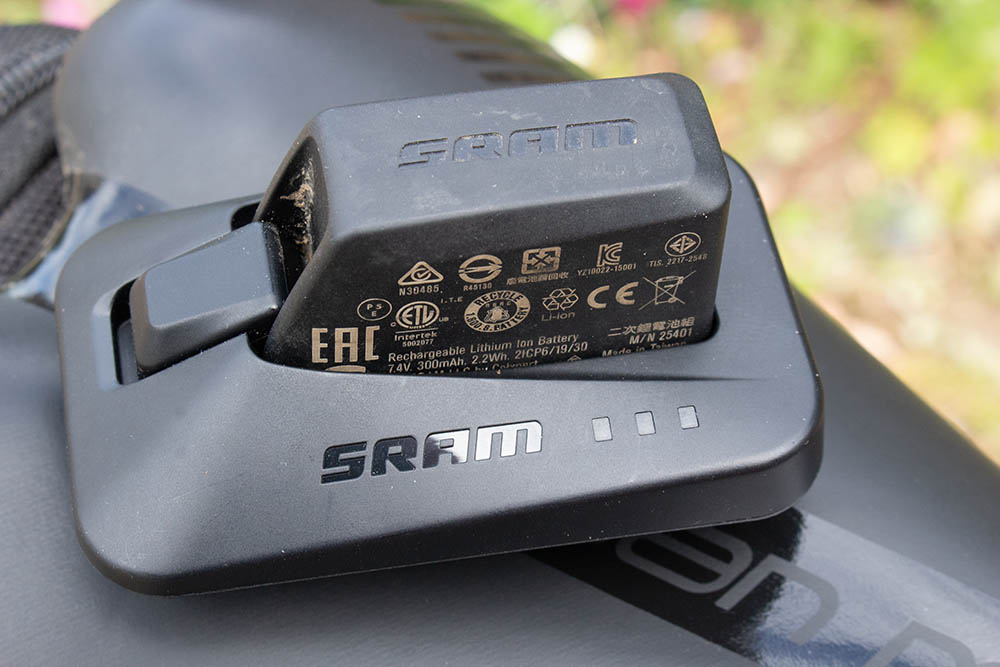
Despite singing its praises here, I have had an instance of the battery draining really fast during a ride – this was the external Di2 battery in extremely wet conditions (NE Scotland in winter). I suspect the battery casing had a leak in the casing somewhere, and it was in more-or-less constant water spray, being mounted under the chain stay. Shortly after this, I replaced the battery with an internally mounted one, and haven’t had any problems since.
Di2 Vs AXS Differences
The main difference between Shimano’s and SRAM’s systems is how the components communicate with each other. Shimano uses a wired system, with one battery, and SRAM uses a wireless system, with a battery in each component.
Shimano has a cylindrical battery, usually mounted in the seat post. There’s also an older design of battery that mounts externally on the bottle cage mounts.
SRAM AXS has a rechargeable battery in each of the derailleurs, and a small coin battery in each of the shifters.
For both systems, the batteries last several thousand kilometres on a single charge.
Each system operates slightly differently. Shimano shifters have two buttons, just like their mechanical brothers, one for up and one for down. SRAM AXS, on the other hand, has only one button on each shifter. A press on the left shifter moves the rear mech up, and the right moves it down. To move the front mech, pressing both switches together moves the mech to the other position.
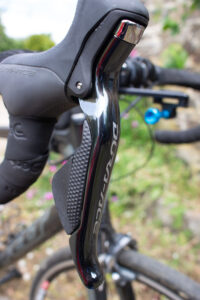
Di2 Shifter with Two Buttons 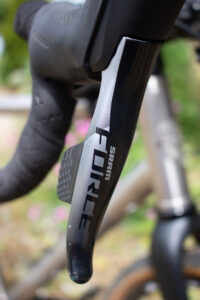
Single-button on AXS Shifter
AXS is reported to change slower than Di2, but it’s not something I’ve noticed in use.
My Experience/Round up
When I was shopping for my Felt Z3, I specifically went for a bike with Di2 so that I could easily add tribars, like I mentioned above.
On my Tempest, I didn’t really like the SRAM Rival double-tap. I used SRAM AXS as the frame didn’t have internal routing, so the Shimano Di2 would have looked messy. At the time, there wasn’t a Shimano gravel option (GRX was released but not generally available), so it would also have meant pairing road shifters with a mountain bike Di2 rear mech. Shimano has a bit of a reputation for breaking setups like this with their software updates, so it wasn’t an ideal option.
SRAM didn’t have the range of rear cassettes that it has now in the Force range, so I went for a ‘Mullet’ x1 setup (Gérard Vroomen has a great post on it here) using Force shifters and an Eagle XX1 rear mech & cassette.
I’m really happy with both setups – there’s not really much to choose between them. If I was buying a new road or gravel bike today, I’d have to have a very specific reason NOT to go for electronic gears. For instance, a bike for long-distance rides where charging may be an issue.
On a mountain bike, I’m not so sure. I think Di2 would be a recipe for problems, with cables getting caught on branches and stones. However, AXS, being wireless, may work better. I’ll report back once I’ve added one to my collection!
Resources
Shimano’s Site: http://bike.shimano.com/en-EU/technologies/component/details/seis.html
SRAM AXS Site: http://www.sram.com/en/sram/road/collections/etap-axs
Carlton Bale’s Di2 Resource: http://carltonbale.com/shimano-di2-everything-you-need-to-know/
Gérard Vroomen’s Mullet Setup: http://blog.3t.bike/2019/09/12028/gravel-tech-hacking-sram-axs-drivetrains/

